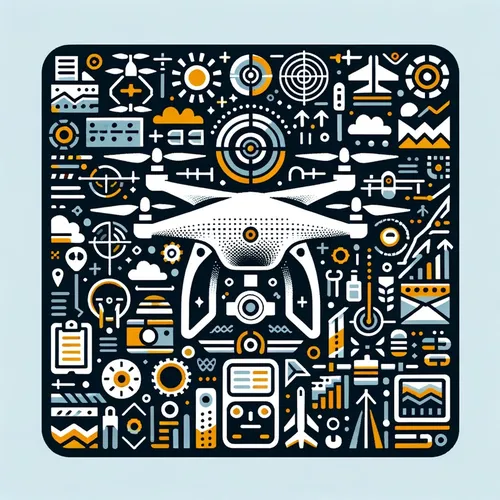Drones Soar, Regs Tighten: Pilots Navigate Evolving Skies and Pricey Reg Fees
- Author
- Quiet. Please
- Published
- Sun 27 Jul 2025
- Episode Link
- https://www.spreaker.com/episode/drones-soar-regs-tighten-pilots-navigate-evolving-skies-and-pricey-reg-fees--67139864
This is you Professional Drone Pilot: Flight Tips & Industry Updates podcast.
The world of professional drone piloting continues to evolve at a rapid pace. For commercial drone pilots, aerial photographers, and inspection specialists, mastering advanced flight techniques is essential. Utilizing automated flight paths and waypoints can enhance precision and efficiency, while incorporating real-time data from onboard sensors helps avoid obstacles and optimize coverage. Consistent practice with manual controls further ensures confidence in high-stakes environments, especially when flying near infrastructure or conducting detailed inspections.
Maintenance remains a core component of successful operations. According to DroneUAV, regular post-flight inspections, battery health monitoring, and firmware updates are non-negotiable for minimizing equipment downtime and safeguarding investments. Predictive maintenance powered by artificial intelligence and sensor analytics is emerging as a market standard, making it easier to identify components at risk of failure before issues escalate. Archivemarketresearch projects that drone maintenance services will grow at over five percent annually through 2033 as fleets expand and regulations tighten.
Business opportunities for professional operators are on the rise, with drone-as-a-service models gaining traction in sectors such as real estate, construction, and agriculture. For example, Dronelife recently spotlighted how building management in cities like New York is being transformed by drones that provide both advanced imaging and efficient exterior maintenance, saving property owners significant repair costs. In tandem, jobs in inspection and asset management are expected to increase as more companies recognize the value of regular, data-driven asset evaluations.
Certification and licensing remain critical for legality and reputation. Current regulations require passing the United States Federal Aviation Administration Part 107 knowledge test for commercial pilots. Recertification now involves updated online training every two years, and as of April 1, 2025, drone registration costs have increased slightly. Internationally, new standards are being adopted to ensure operational safety in controlled airspace and close-quarters urban work.
Professional client relations and dynamic pricing are more important as market competition sharpens. Savvy operators provide detailed project plans, transparent rate cards, and clear communication, which leads to higher client retention. Weather remains a top variable—using specialized weather forecasting tools tailored for low-altitude aviation can significantly reduce the risk of weather-related groundings.
On the legal and risk front, many insurers are rolling out flexible, usage-based coverage for drone operators, reflecting the diversity of present-day missions. Comprehensive liability coverage is a key differentiator when marketing your services to risk-conscious clients.
Looking ahead, expect continued advances in autonomous flight software, tighter airspace regulations, and broader acceptance of drones in sectors previously hesitant to adopt new technology. Stay informed, invest in your skills and equipment, and always document your flights and maintenance for full compliance and peace of mind.
Special thanks for tuning in today. Be sure to return next week for more insights and updates. This has been a Quiet Please production, and for more, check out Quiet Please Dot A I.
For more http://www.quietplease.ai
Get the best deals https://amzn.to/3ODvOta
